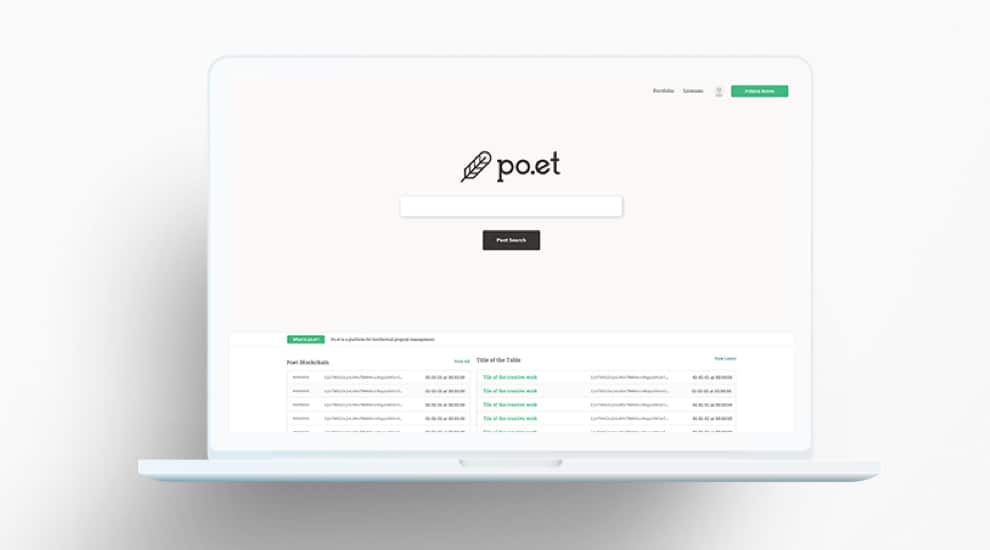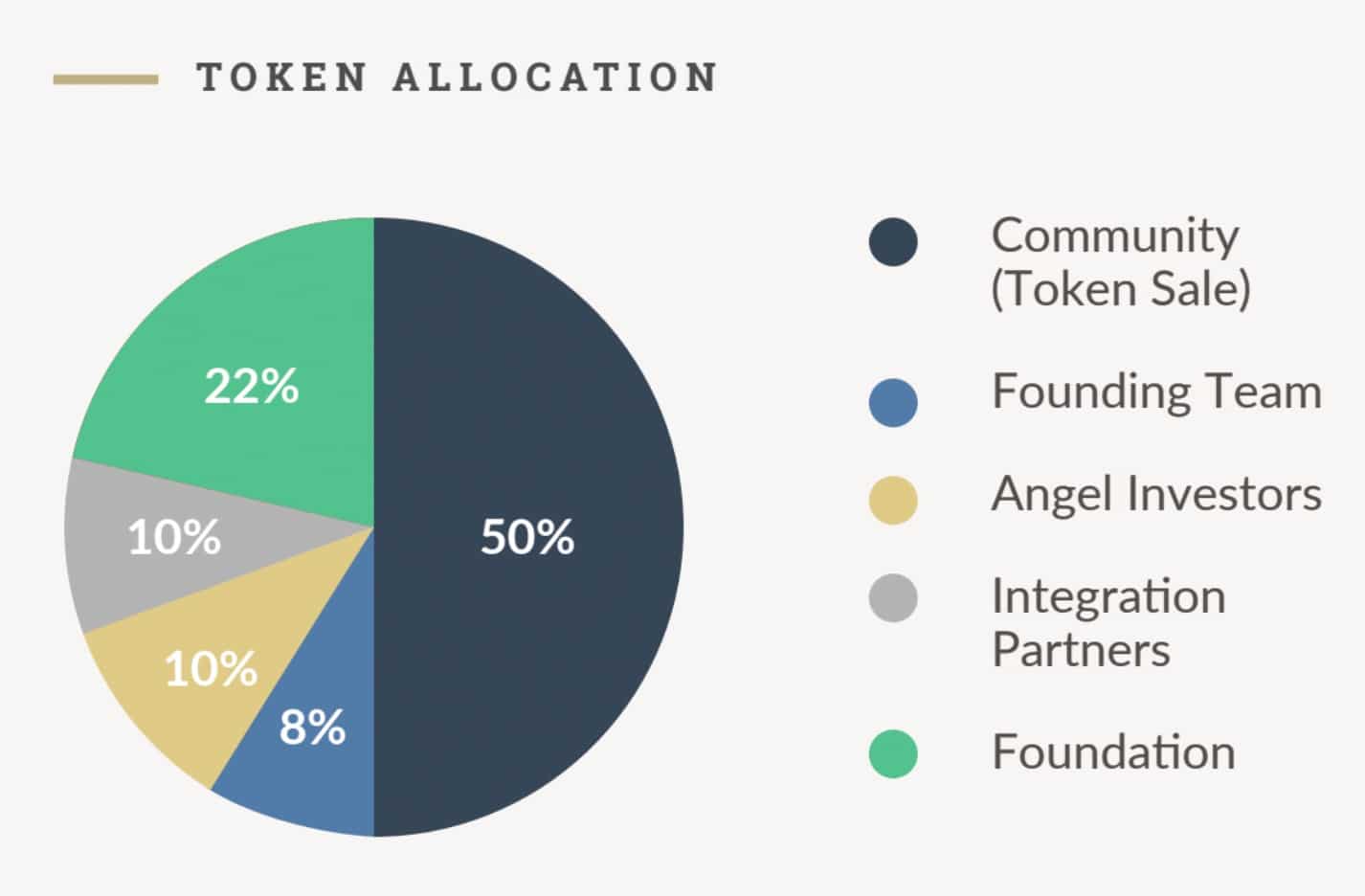Latest news about Bitcoin and all cryptocurrencies. Your daily crypto news habit.
What is Po.et?
Po.et is an Ethereum-based, universal ledger designed to track ownership and attribution for the world’s digital creative assets.
In today’s age of instant information exchange, licensing processes and accreditation have become a huge pain point for digital content creators. In a simple click, anyone can copy your picture or paragraph and repost it as their own. If they do seek proper licensing, it can be a highly labor-intensive task, requiring multiple emails and lawyers. Oftentimes, this process is simply not worth it for an article that took a journalist just a couple of hours to write.
Po.et has made it their mission to address this problem by creating the first platform that uses the blockchain to digitally timestamp content and serve as a single source for licensing information.
How Does It Work?
A Unique “Fingerprint”
Po.et uses “Proof of Existence”, the first non-financial application of the blockchain. When you add something to the Po.et marketplace, it’s given a unique “fingerprint” that can’t be altered, tampered or edited after being assigned. Thanks to the blockchain, the “fingerprint” has no single point of failure and the content needs no 3rd party or publisher to gain access.
A Digital Marketplace
On top of offering an immutable certificate of ownership, Po.et also aims to be a platform for creators to be discovered. You can add your digital content to different marketplaces to be featured and properly licensed. The marketplaces use Po.et’s token, POE, to uniquely incentivize members to add and fairly rate relevant content.
To add content to a marketplace, you must first stake your coins. If the members of the marketplace believe the content is a good fit, they’ll accept it. If the members of the marketplace don’t believe the content is a good fit, they reject it and confiscate your coins.
As a member on the Po.et platform, you can create your own marketplace and make it as broad (ie. photography, poems, memes) or specific as you choose (ie. pictures of walruses in birthday hats, songs about climbing rocks in Colorado, etc.). You can then specify the voting terms, requirements, and amount of POE new contributors need to stake to apply to join. The more quality content in a marketplace, the more valuable the marketplace becomes. This incentivizes members to only accept quality, relevant submissions and reject the unfitting ones.
This staking process should incentivize you to only submit relevant content as you’ll lose your coins if not. So, don’t submit pictures of “dogs in sun hats” to “walruses with birthday hats” – the community won’t accept it.
Additionally, if someone submits content to a marketplace that you believe has been plagiarised, you have the ability to “challenge” the submission. Using the unique fingerprints assigned to each document, members can vote to accept or reject the challenge. If the challenge is approved by the majority of the members, the new content is removed from the marketplace.
POE Token
POE is the ERC20 currency used on the Po.et marketplace. At the time of launch, it’s three main uses, as described by the Po.et team are:
- To bootstrap the network effects of Po.et by creating a community of engaged invested stakeholders and publishers
- To raise funds for the long-term development of the Po.et Foundation
- To provide a mechanism to incentivize and reward early adopters and positive contributions to the Po.et network
As the network matures, the founders hope that POE can serve as the economic incentive behind Po.et’s need to promote quality, curated content on their trustless platform.
The team minted a total of 3,141,592,653 (the digits of pi!) POE during the ICO in August 2017. The team sold 50% to the community through the token sale event, raising a total of $10 million USD. The rest of the token allocations were as follows:
- 8% Founding Team
- 10% Angel Investors
- 10% Integration Partners
- 22% Foundation
- 50% Token Sale
Po.et Team and Progress
Po.et was conceived within BTC Media, a publishing and marketing firm that focuses on the blockchain space. BTC Media co-founder, Tyler Evans, was frustrated with the labor-intensive process associated with licensing content and attributed it largely to “not having a single source of truth about licensing information.” There are currently 10 core members on the Po.et team including CEO Jarrod Dicker who previously served as the president of innovation and commercial strategy at The Washington Post.
The development of Po.et has been separated into three phases: The Rosetta Era, The Guttenberg Era, and The Alexandria Era.
The Rosetta Era
The Rosetta Era began in June 2017. Most notably during this time, Po.et released their ICO and raised $10 million dollars from the token sale. Using these funds and their seed round, Po.et was able to launch their public test net and integrate their first publishers onto the platform. WordPress users were officially able to timestamp and keep an updated log of all of their written work.
The Guttenberg Era
Po.et has officially entered the “Guttenberg Era”. According to their roadmap, Po.et will unveil their licensing marketplace in the upcoming months. This marketplace will integrate 20+ established publishers and allow creators to begin hosting their written content. As well as facilitating discovery, the marketplaces will accommodate creative licenses and allow for payments to content creators through frictionless payment channels.
The Alexandria Era
The final era of development will be open to all interested users and begin supporting images and videos in the marketplace.
Trading
Launched in August 2017, POE is still a relatively new token. The current market price is about .0000053 BTC, less than 1/4th of it’s January 2018 high of .000017 BTC. While it suffered major blows in the overall crypto market pullback early this year, the team has remained focused on their product and roadmap. It will be interesting to see if the price can recover and continue to grow as the project matures.
baseUrl = "https://widgets.cryptocompare.com/";
var scripts = document.getElementsByTagName("script");
var embedder = scripts[ scripts.length - 1 ];
(function (){
var appName = encodeURIComponent(window.location.hostname);
if(appName==""){appName="local";}
var s = document.createElement("script");
s.type = "text/javascript";
s.async = true;
var theUrl = baseUrl+'serve/v3/coin/chart?fsym=POE&tsyms=USD,EUR,CNY,GBP';
s.src = theUrl + ( theUrl.indexOf("?") >= 0 ? "&" : "?") + "app=" + appName;
embedder.parentNode.appendChild(s);
})();
Where to Buy POE
Today, POE can be purchased on a number of popular exchanges including Binance, Bittrex, OKex, and EtherDelta.
Where to Store POE
Because POE is an ERC20 token, you need to store it in a wallet with ERC20 support. The recommended option is a hardware wallet like the Ledger Nano S.
If you don’t want to shell out the cash for a hardware wallet, you can use Exodus wallet for free.
Conclusion
Po.et is a shared, universal ledger designed to track ownership and attribution for the world’s digital creative assets. While the project is still very young, they’ve already made a splash in the blockchain ecosystem. With a series of positive key hires and a well-thought-out, and so far, well-executed roadmap, this team looks poised to take Po.et far. If the team succeeds, they aim to bring the media and publishing industry into tomorrow’s Internet of Value.
The post What is Po.et (POE)? | Beginner’s Guide appeared first on CoinCentral.
Disclaimer
The views and opinions expressed in this article are solely those of the authors and do not reflect the views of Bitcoin Insider. Every investment and trading move involves risk - this is especially true for cryptocurrencies given their volatility. We strongly advise our readers to conduct their own research when making a decision.


